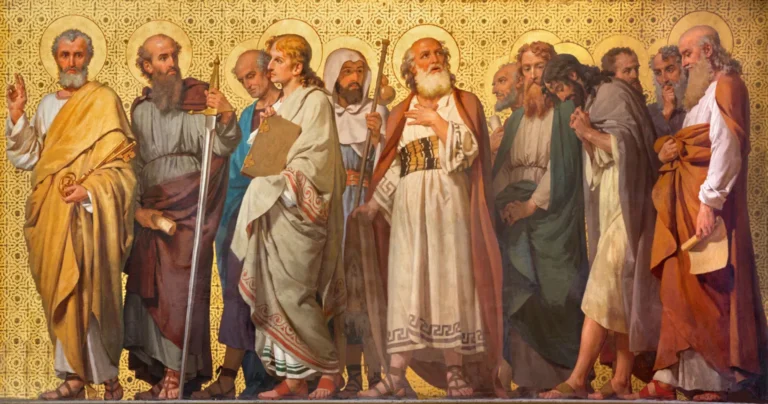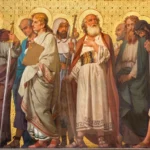It’s a claim may hear for instance on the internet, on documentaries, or in The Da Vinci Code: “Christians didn’t have the New Testament until the 4th century.” According to this view, the New Testament was put together late—by powerful bishops at church councils who picked their favourite books and excluded others.
The implication? That the New Testament we read today is more the result of politics and power than divine purpose.
But is that actually true?
No, it’s not. The idea that the church didn’t have a New Testament until the 4th century is one of the most persistent—and most inaccurate—misconceptions about the Bible. In this blog, we’ll walk through where that idea comes from, why it misses the mark, and what history really tells us about the early church and the New Testament canon.
Where the Misconception Comes From
In the year AD 367, a bishop named Athanasius of Alexandria wrote a letter to his churches for Easter. In that letter, he listed the 27 books that we now call the New Testament. It’s the earliest known list that matches the exact New Testament we use today—no more, no less.
Because of that, many assume this was the moment the New Testament was created. They point to this list and say, “See? The Bible wasn’t finalized until the 4th century!”
But that’s a misunderstanding of what Athanasius was doing. He wasn’t picking new books. He was simply affirming what the church had already come to recognize.
What the Church Was Already Doing
By the time Athanasius wrote his Easter letter, Christians had already been reading, copying, and teaching from most of the New Testament books for centuries. As we discussed in the previous blog, by the middle of the 2nd century, most churches had already accepted a core group of 22 out of the 27 books we know today.
Those books were:
- The four Gospels: Matthew, Mark, Luke, and John
- Acts
- The 13 letters of Paul
- 1 Peter, 1 John, and Revelation
Only a few shorter books—2 John, 3 John, Jude, James, and 2 Peter—took more time to gain widespread recognition. Not because they weren’t trusted, but because they were smaller, less circulated, and less frequently quoted. That’s how handwritten transmission worked in the ancient world: smaller texts traveled slower.
The Problem with the “List” Argument
It’s important to understand that a written list is not the beginning of canon—it’s a reflection of it. Lists are helpful, but the authority of the New Testament didn’t come from a council or a bishop putting it on paper.
The church recognized these books as Scripture long before they ever made an official list. They were quoting them in sermons. Copying them in manuscripts. Risking their lives to protect them. Teaching them to new believers.
These books functioned as Scripture before anyone ever voted on them. As one historian put it,
“One thing must be emphatically stated. The New Testament books did not become authoritative for the Church because they were formally included in a canonical list; on the contrary, the Church included them in her canon because she already regarded them as divinely inspired…”
—F. F. Bruce, The New Testament Documents: Are They Reliable?
What About Earlier Lists?
Athanasius wasn’t even the first to attempt a list of New Testament books. Over a century earlier, the great scholar Origen (c. AD 184–253) listed all 27 New Testament books in his writings. And he didn’t present the list as controversial or new—he mentioned it casually, assuming his readers already knew and accepted these books.
That tells us the recognition of the New Testament canon was not invented in the 4th century. It was already deeply rooted in the life and teaching of the early church.
The Real Reason It Took Time
So why didn’t the church have a final, universally recognized list from day one?
Because God worked through ordinary historical processes. These books had to be written, copied, delivered, read, and discussed—by real people, in real communities, spread across the Roman Empire. There was no printing press. No internet. No central headquarters.
And yet, even through that slow process, the church consistently recognized the same core set of books as Scripture. That speaks to the power and clarity of God’s Word.
Conclusion: We Didn’t Wait Centuries for the New Testament Canon
The church didn’t have to wait for a council or a bishop to finally deliver a Bible. Christians were reading and recognizing the authority of the New Testament books almost from the moment they were written.
By the time official lists and councils arrived, they weren’t inventing something new. They were simply acknowledging what the churches already knew—these books carry the voice of Jesus.
You can trust the Bible you read today. It wasn’t formed in secret or imposed by force. It was received by believers, guided by the Holy Spirit, and preserved across generations. And that’s something to give thanks for.
Want to keep learning? Continue reading the rest of the series as we answer more common questions about the reliability of the Bible.
Read other blogs in this series:
- Did the New Testament Writers Know They Were Writing Scripture?
- Was There Chaos Over Which Books Belonged in the New Testament?
- Did the Church Really Not Have a New Testament Until the 4th Century?
- Are the Apocryphal Gospels Just as Valid as Matthew, Mark, Luke, and John?
- Were the Lost Gospels as Popular as the Ones in the Bible?
- Did the Church Choose Which Books Belong in the New Testament?
- How Can We Be Sure We Have the Right Books in the Bible?
Subscribe to our newsletter to get each post delivered straight to your inbox as we continue this journey through the truth and trustworthiness of Scripture.









